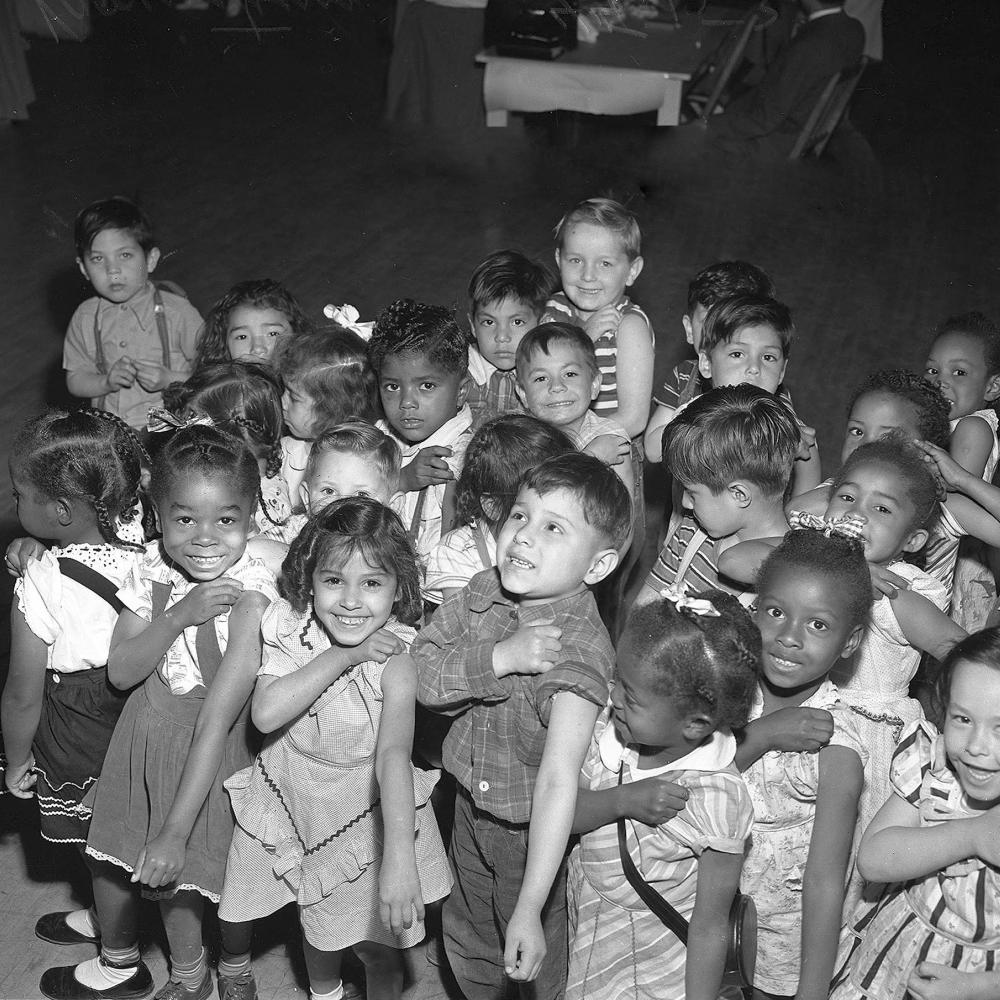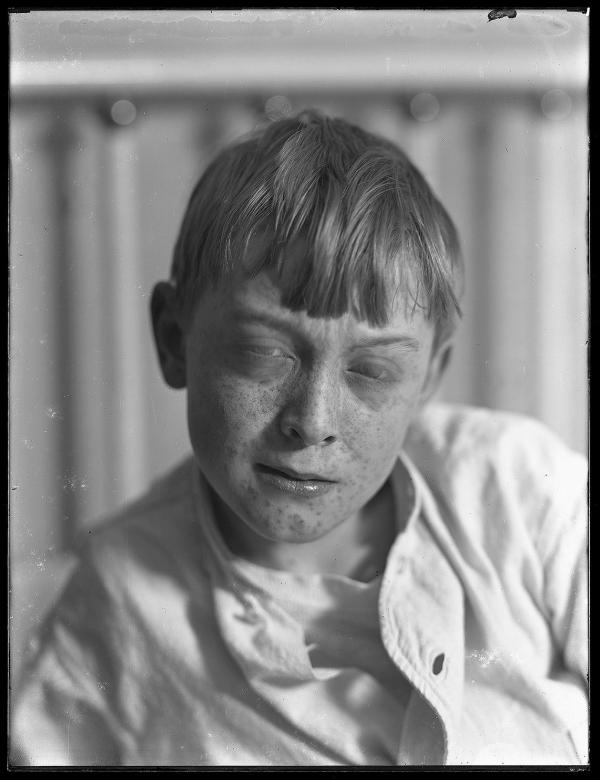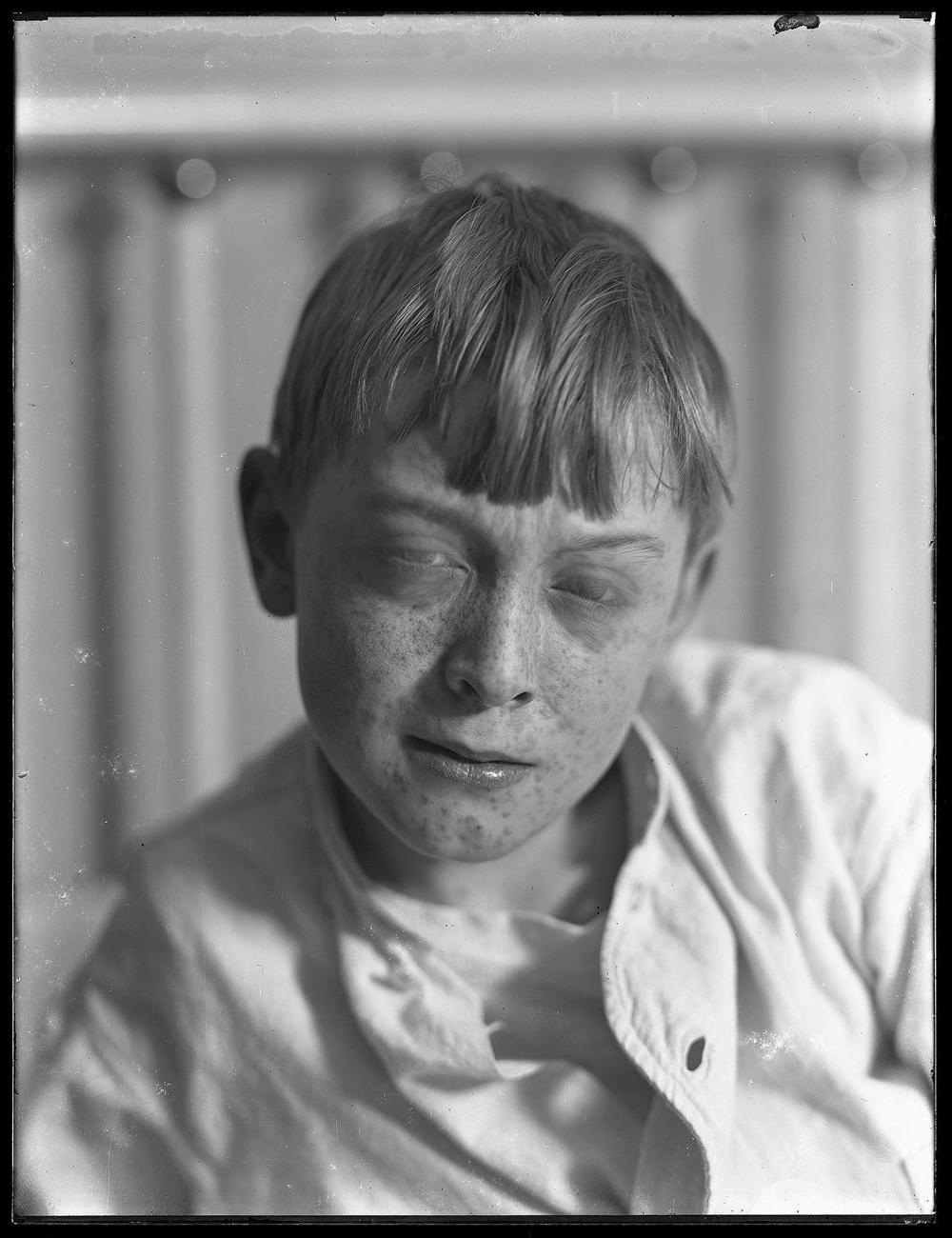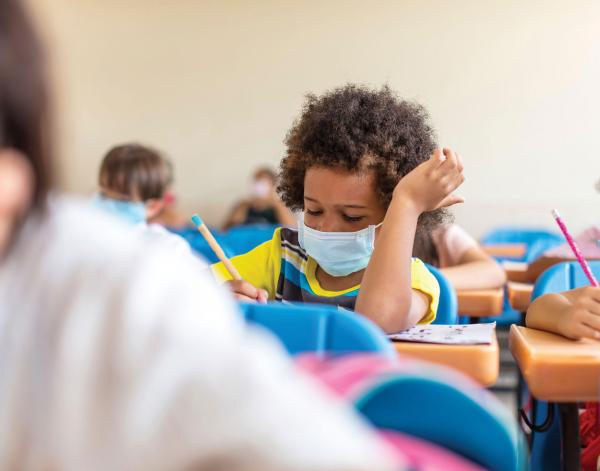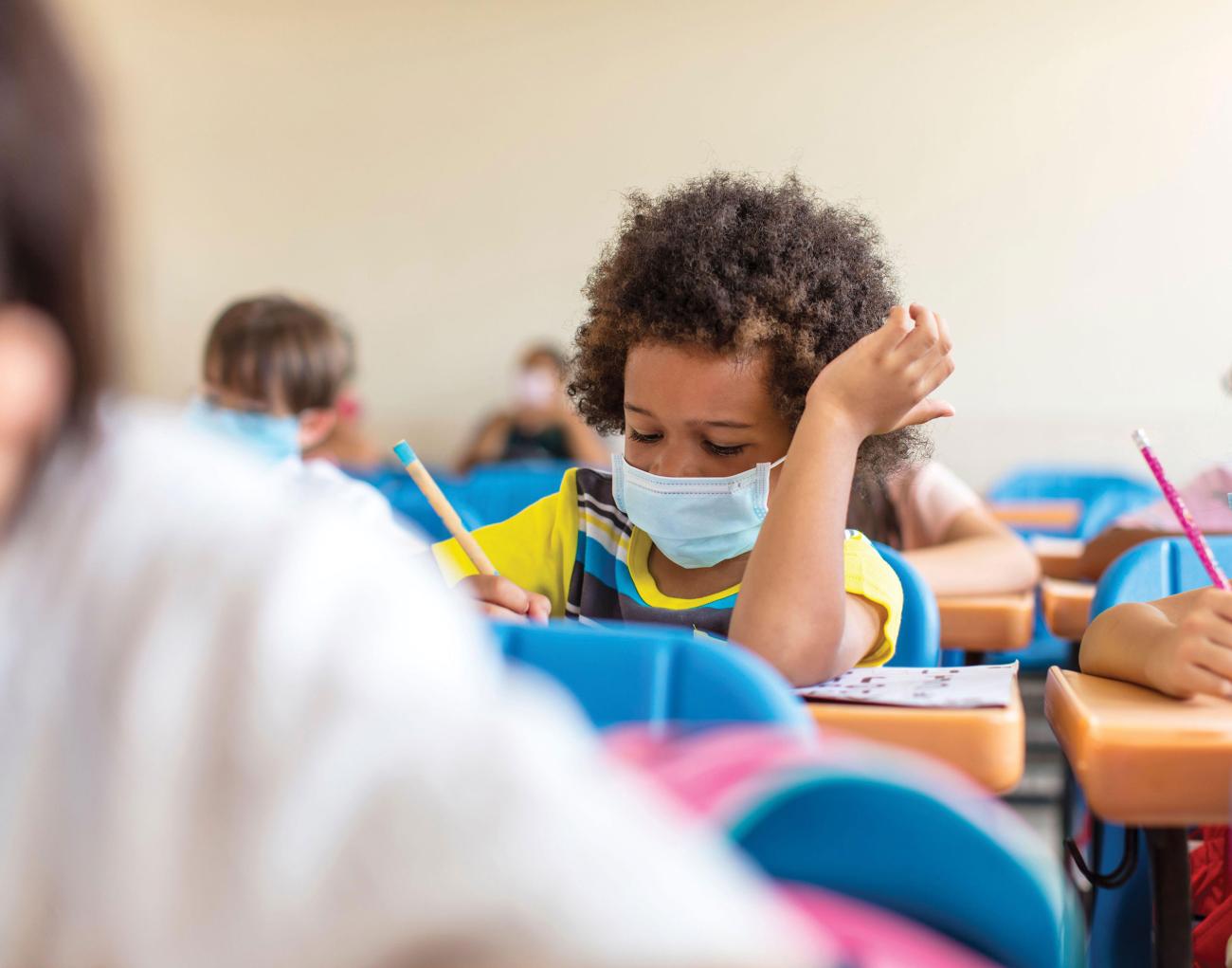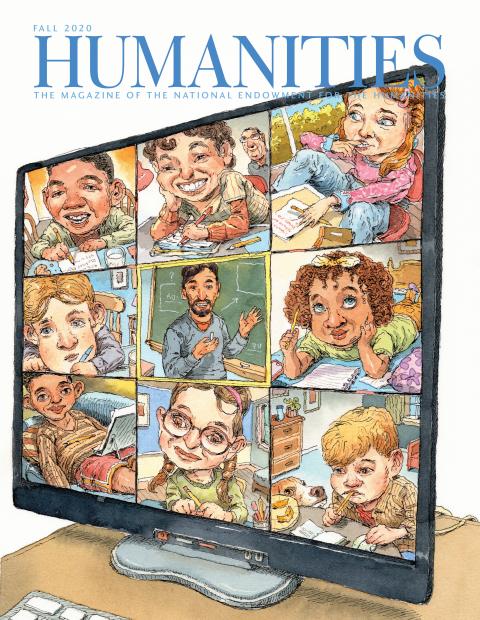In late 1897, 65 children became ill in a measles outbreak at the Mound Street Elementary School in Columbus, Ohio.
As local physicians attempted to understand the trajectory of the disease, they turned their attention to lead pencils. Every day, the students were supposed to use pencils marked with their own names, which they then returned to a communal bin. But the children had been drawing with other students’ pencils instead of their own, and putting the tips of these shared pencils into their mouths before returning them. Here, doctors concluded, was the source of the transmission.
Today we know that the virus that causes measles is airborne, though also present in saliva. For several days before the distinctive measles rash appears, an asymptomatic person can unknowingly infect others nearby through respiratory droplets in normal speech, as well as any coughs or sneezes. As the Mound Street students sat down at their desks, they were likely exposed to the virus through mere proximity to an infectious classmate. Measles was so contagious that before the 1963 introduction of a vaccine, most American children contracted the disease before they reached adolescence. For children in elementary school, measles was relatively predictable, difficult to avoid, and only rarely fatal. For babies and young children under five years of age and for adults, the risk of complications was somewhat higher. In 1910, over 6,500 Americans died of measles, while others died of complications of measles such as pneumonia.
The medical risks faced by children have changed dramatically since the beginning of the twentieth century. Whereas 10 percent of American infants born in 1900 died before reaching their first birthday, a century later the death rate among infants was below 1 percent. New vaccine development in the first half of the century offered protection against potentially fatal illnesses such as pertussis, diphtheria, and tetanus; the much-heralded polio vaccine of 1955 was followed by others protecting against measles, mumps, and rubella. The mid-century commercial introduction of antibiotics also allowed doctors to treat bacterial infections that might once have proven fatal. In the wake of improvements in public sanitation and hygiene, advances in medicine, and the rising economic circumstances of many families, almost all American children now survive their childhoods.
Indeed, pediatric medicine has come so far over the past century that a rising minority of parents have come to see the risks to their children of many contagious diseases as remote. Vaccine opposition in recent decades has been driven partly by misinformation and mistrust of medical authority, but also by parents calculating the risk of vaccinating their children against the risk of illnesses that they have never personally encountered in their families or social circles, precisely because earlier vaccination campaigns were so successful. In Clark County, Washington, a suburb of Portland, Oregon, a measles outbreak in early 2019 infected 71 people, of whom 52 were children between one and ten years of age, most of whom had not been immunized against measles. The local county measles vaccination rate had fallen too low to ensure herd immunity. Contact tracers worked to locate thousands of people who might have been exposed to measles through their schools, day care centers, sports events, places of worship, and stores. Local vaccination rates also rose sixfold that winter, as parents reassessed risk.
No parent could ever hope to shield their children fully (and, by extension, themselves) from the viral and bacterial outbreaks that emerge at schools, day care centers, and camps. By their nature, these spaces bring children together, and they pose many potential hazards: unsanitary food and beverages; deficiencies of hygiene and ventilation; overcrowding; and contact with potentially ill peers, teachers, coaches, and shared supplies. Any parent who has repeatedly deloused a child’s hair after school infestations or experienced one family cold after the next when a child first enters day care can attest that some risks are almost inevitable in group settings.
Yet a new infectious agent such as the virus that causes COVID-19 tests our confidence in assessing age-based risks. In the current pandemic, young people appear far less likely than older adults to become seriously ill or to die following infection. But scientific studies have thus far been less clear about the degree to which asymptomatic children are contagious, and thus capable of spreading infection (especially to older family members). We have a far more robust understanding of medical risk and disease transmission than did earlier generations of Americans, and many more medicines with which to manage the symptoms of disease, but we face uncertainties about age, risk, and disease transmission that would have been familiar to our peers a century ago.
These risks have long been unequally distributed among American children and their parents. By the Progressive era, young people of all classes were increasingly the targets of new laws that restricted child labor and made school attendance mandatory for longer periods. As sociologist Viviana Zelizer has argued, children’s diminishing economic value coincided with the rise of their emotional “pricelessness.” But even as this cultural transformation helped to consolidate the notion of childhood as a protected time apart, some children were more protected than others. Throughout the twentieth century, black babies were at significantly higher risk of dying than white babies, a difference that reflected racialized economic inequality and unequal access to prenatal and postnatal care. Middle-class parents were better able to shield their growing children from health risks such as substandard housing, polluted neighborhoods, and overcrowded schools than were working-class parents.
Today, the experiences of American children in this pandemic expose our own era’s systemic inequalities. A small number of children ill with symptoms of COVID-19 enter hospitals with serious complications; disproportionately, these are children of color whose parents are frontline or essential service workers and thus more vulnerable to acquiring the virus. The precariousness of some families’ economic circumstances makes the loss of in-person education that much more detrimental to their children, yet despite the information revolution, millions of American children still lack reliable internet access at home, the equipment they would need to participate comfortably in online schooling, and the regular proximity of a parent able to supervise their work. Educational divides that existed before COVID-19 have widened, disproportionately affecting families in poverty and children with special needs.
From the beginning of the twentieth century, the idea that protection from harm is a fundamental right of childhood has been a central rallying cry of child care professionals. So has the idea that all children have the right to a good education. But school districts across the nation have struggled to balance one kind of risk (the potential for community spread to more medically vulnerable people) against another (the likelihood of inadequate education). In this health crisis, middle-aged and older Americans are at far higher risk of complications.
Until we know what comes next—how long the economy will suffer, how many people will die, and how long disruptions to education will persist—the degree to which COVID-19 will mark today’s generation of children is uncertain. In the short term, far more American children than usual have suffered the death or protracted illness of grandparents and parents, and have worried about their own physical vulnerability to serious illness. Approximately fifty-five million children have experienced the historic interruption of in-person instruction. And, in the wake of increased social isolation, disrupted routines, and economic uncertainty, more parents have reported poorer mental health outcomes for themselves and their children.
The long-term effects of this pandemic on children may not be visible for some time to come. Glen Elder, in a seminal study of children in the Great Depression, found this cohort ultimately resilient over time. Although these children experienced material want and saw their parents struggling, and though some experienced long-term economic consequences as a result of dropping out of school early, they came of age in an era of relative postwar prosperity that cushioned their adult lives. Today’s generation of children and their parents are learning several important lessons in and out of school: that pandemic risk management is imperfect; that individual families’ choices, while critical in mitigating risk, are limited by broader governmental decisions; and that we all live within webs of connection that extend far past our immediate circles. These lessons may well heighten civic-mindedness among American children as they grow up.

